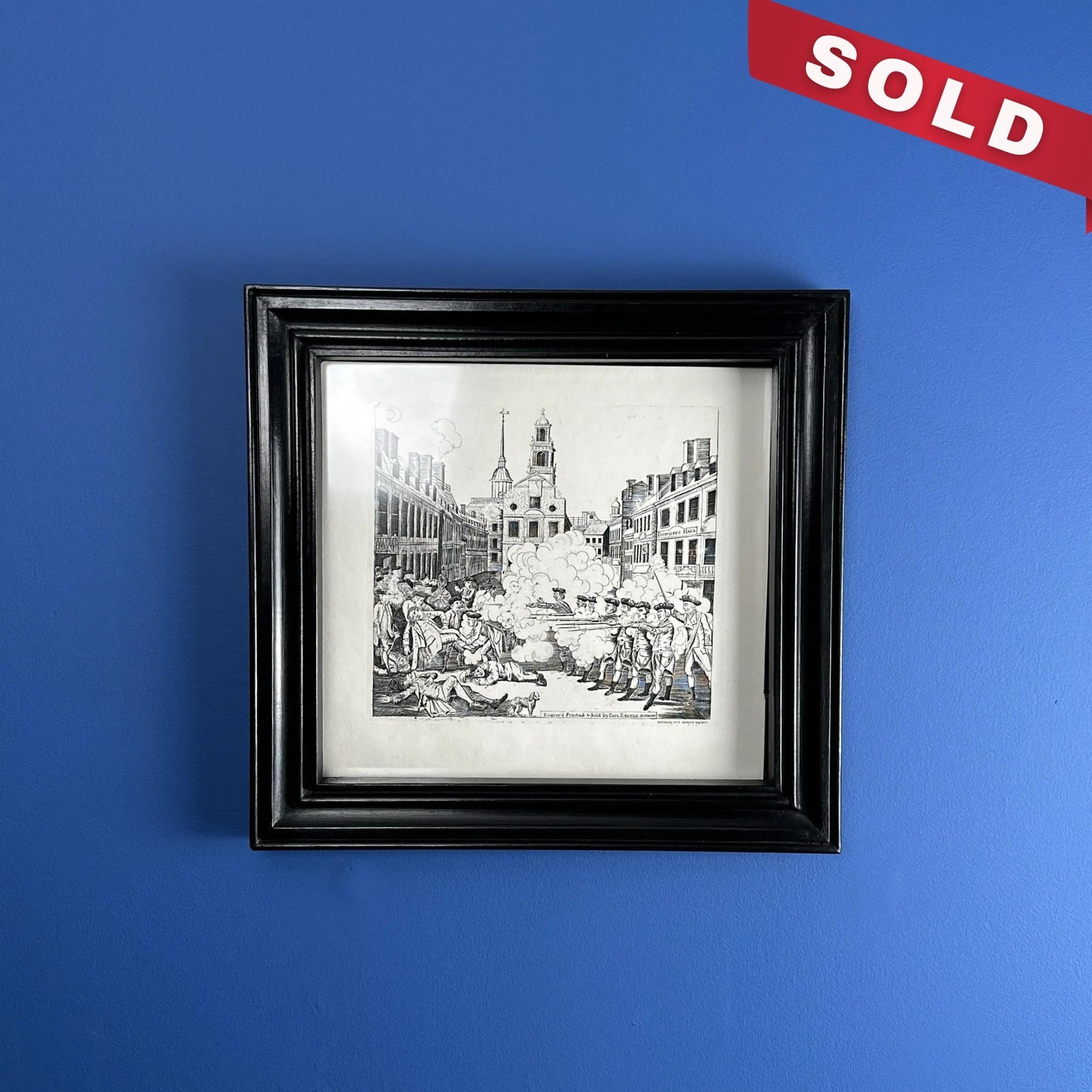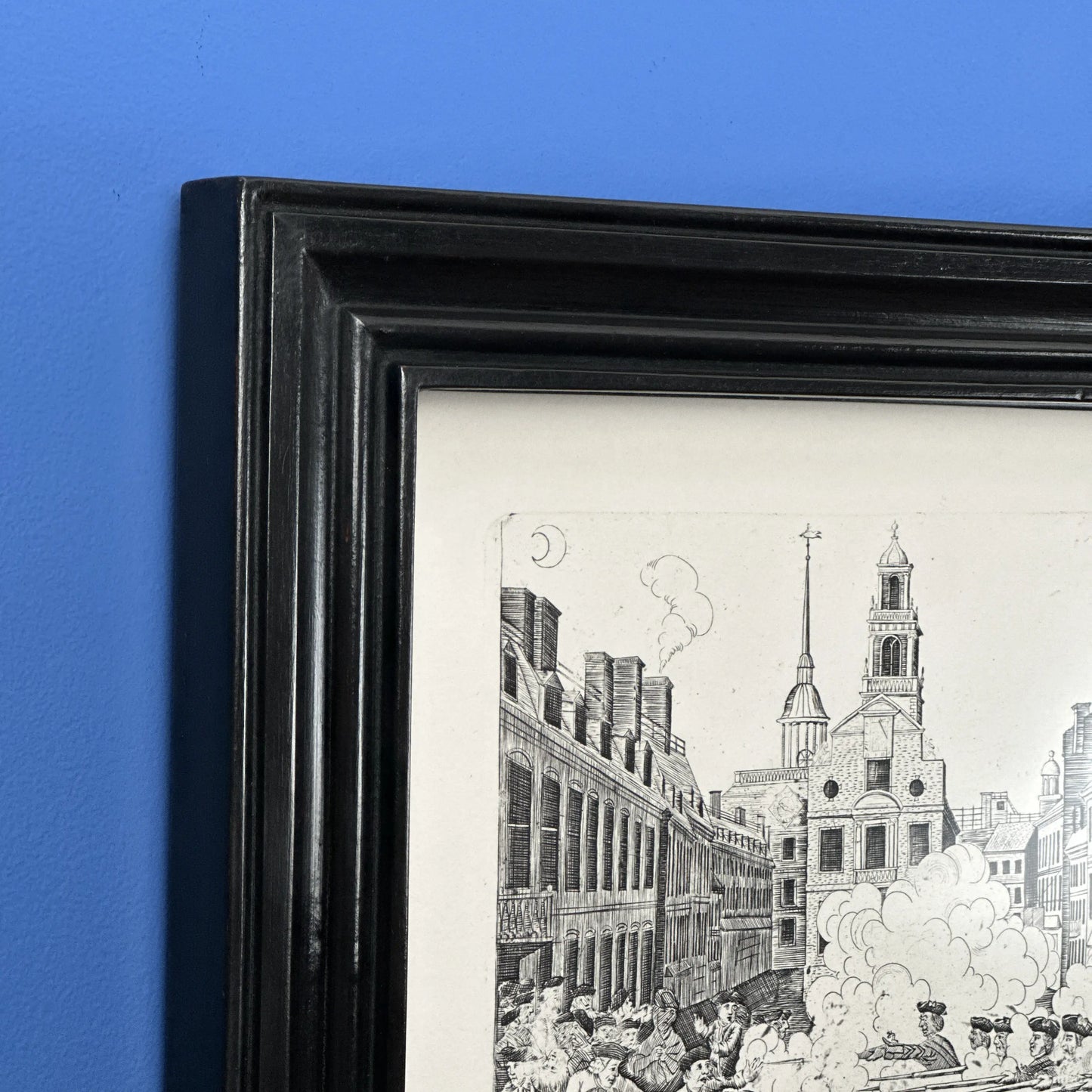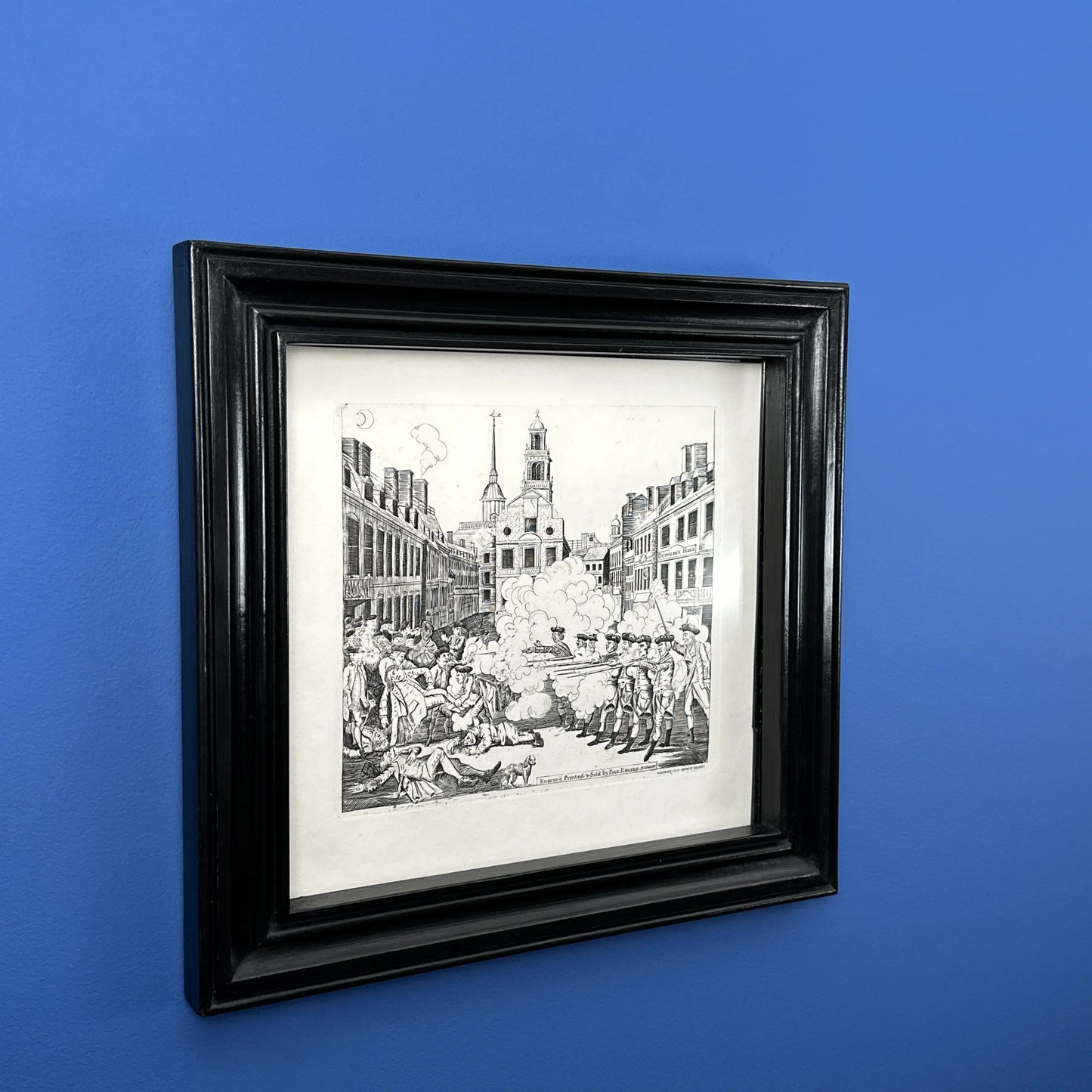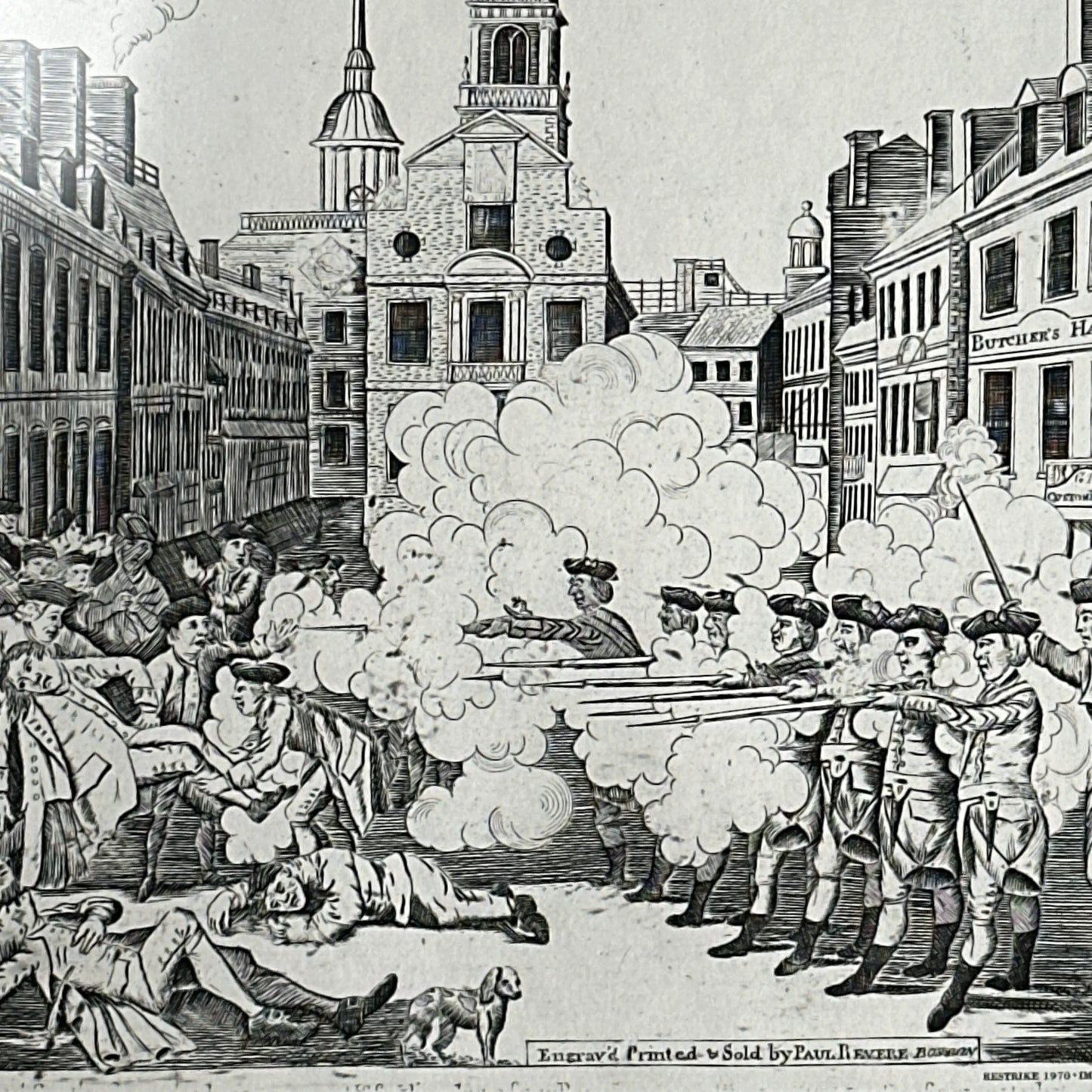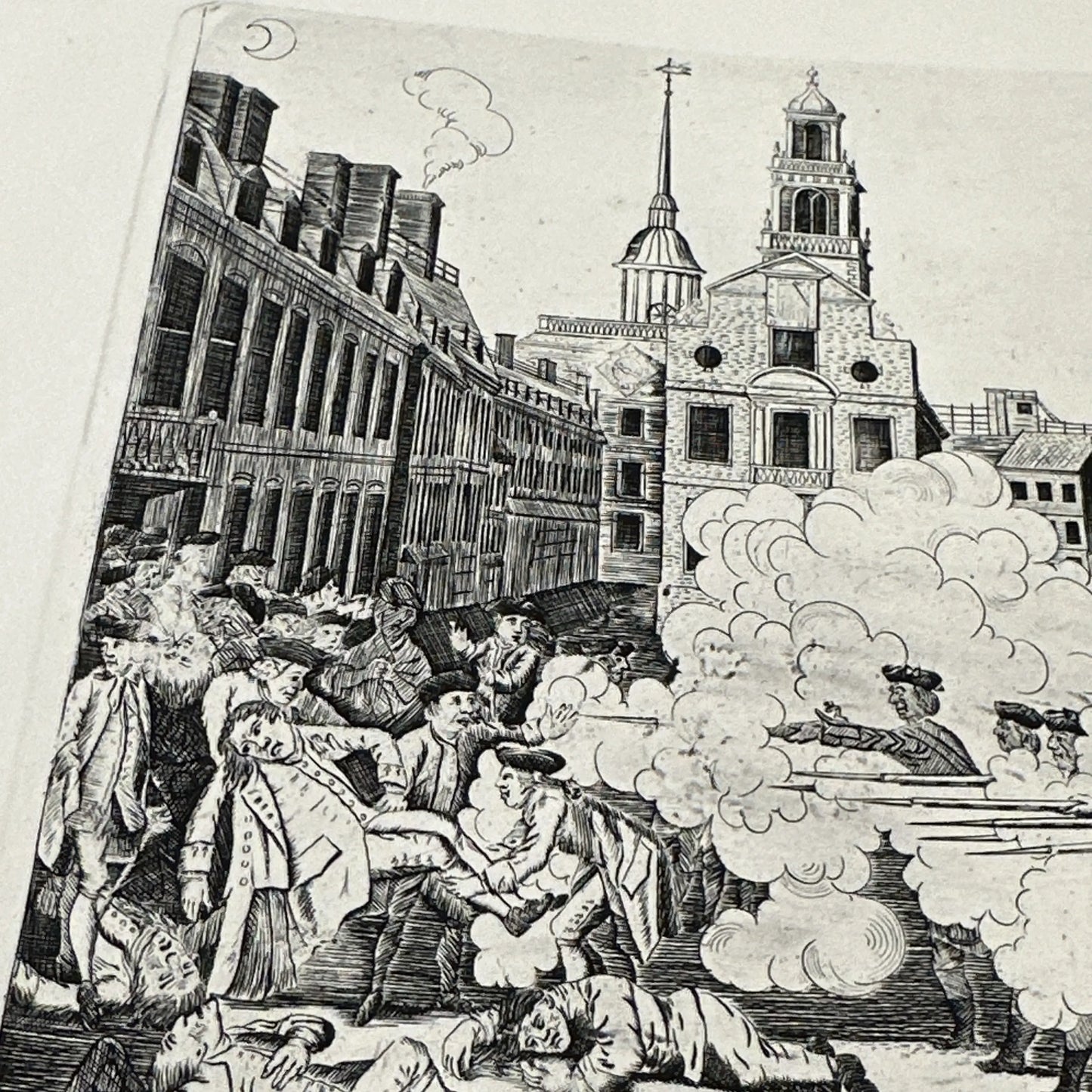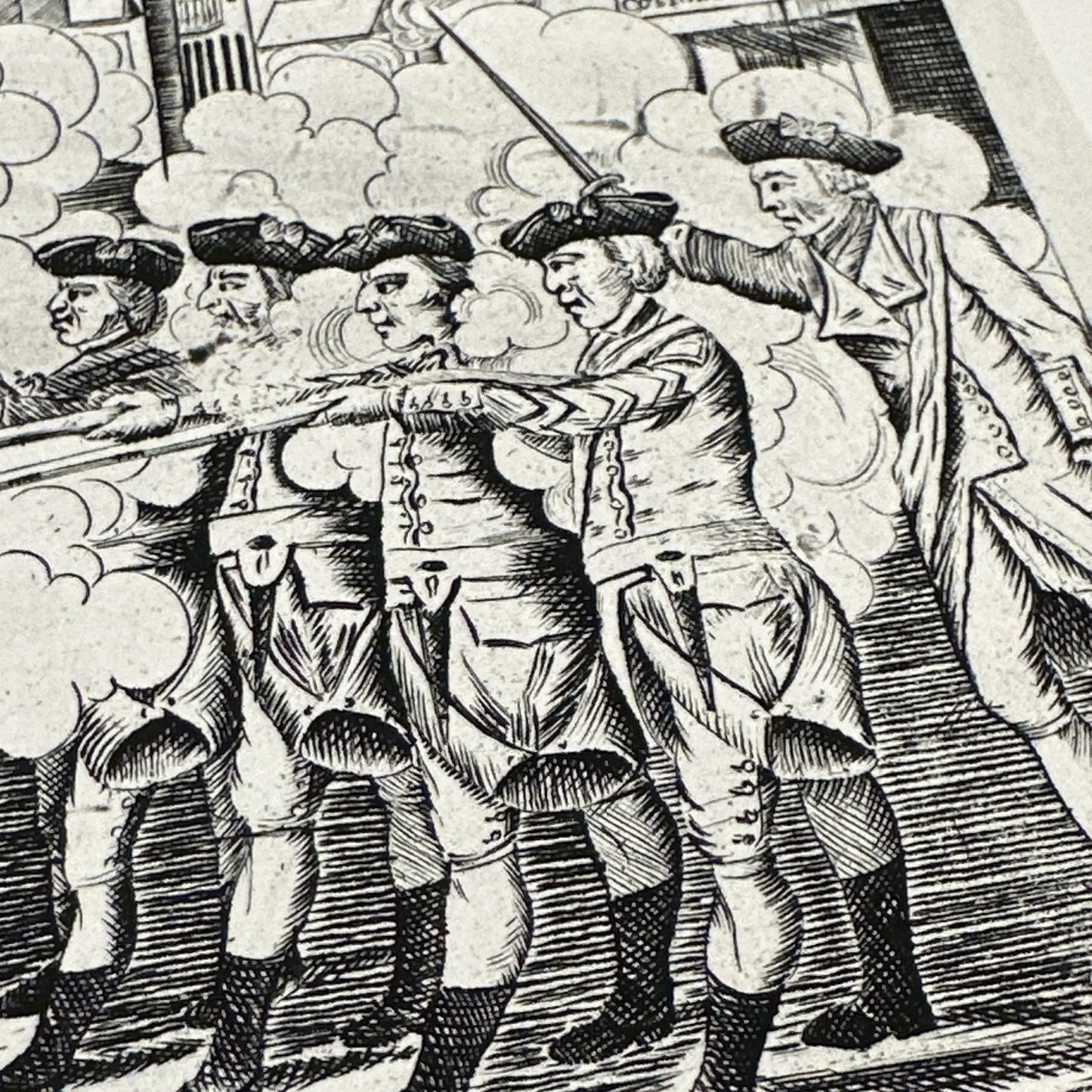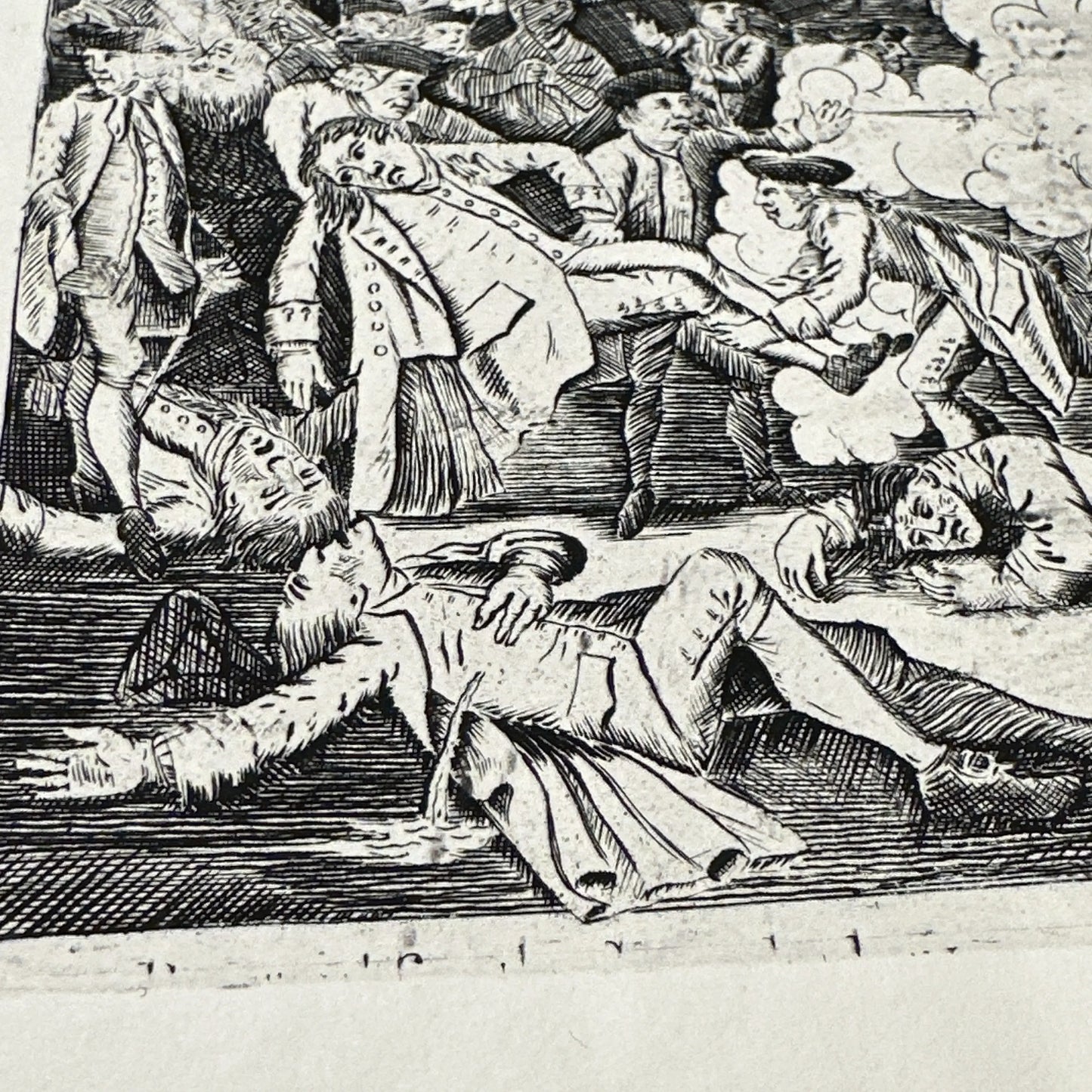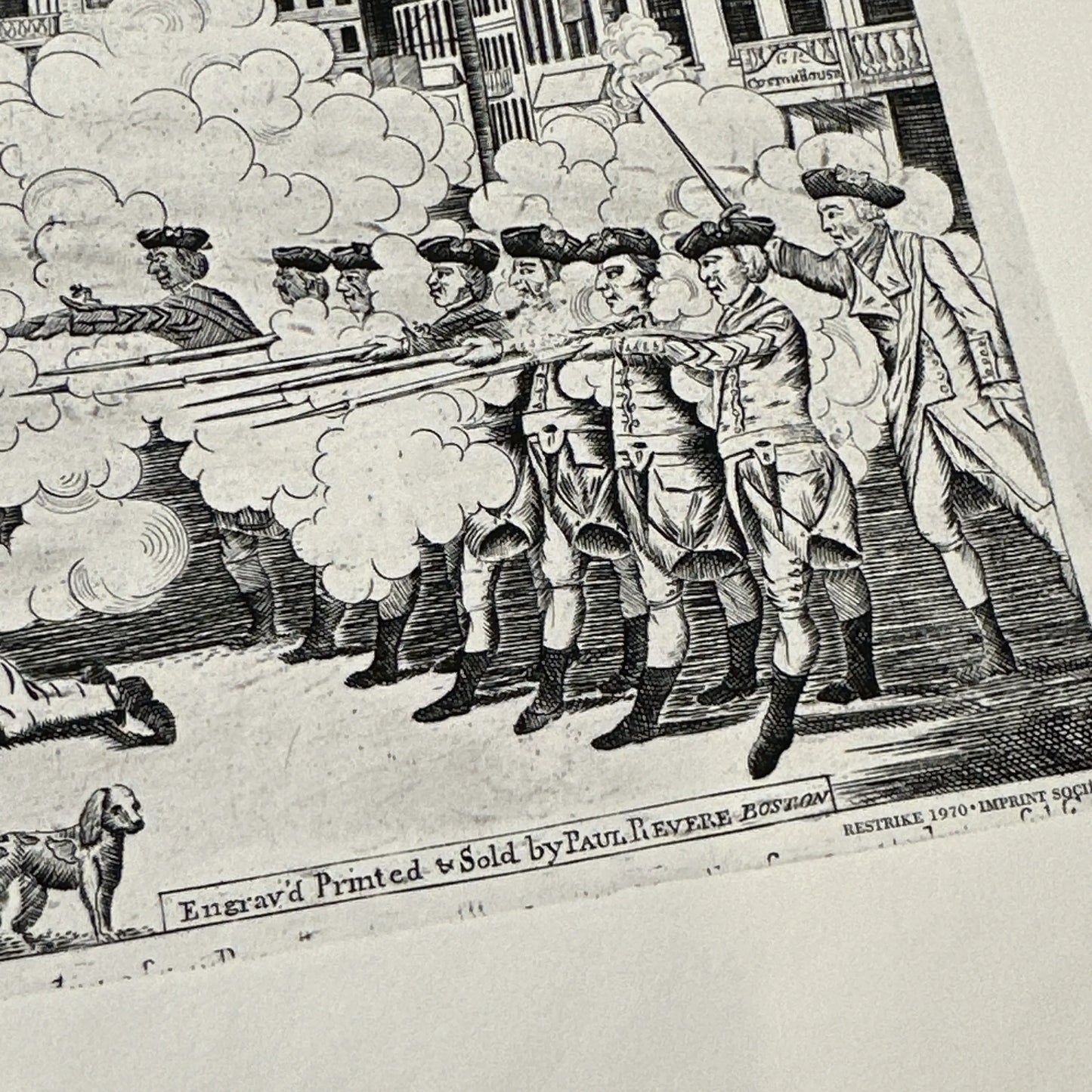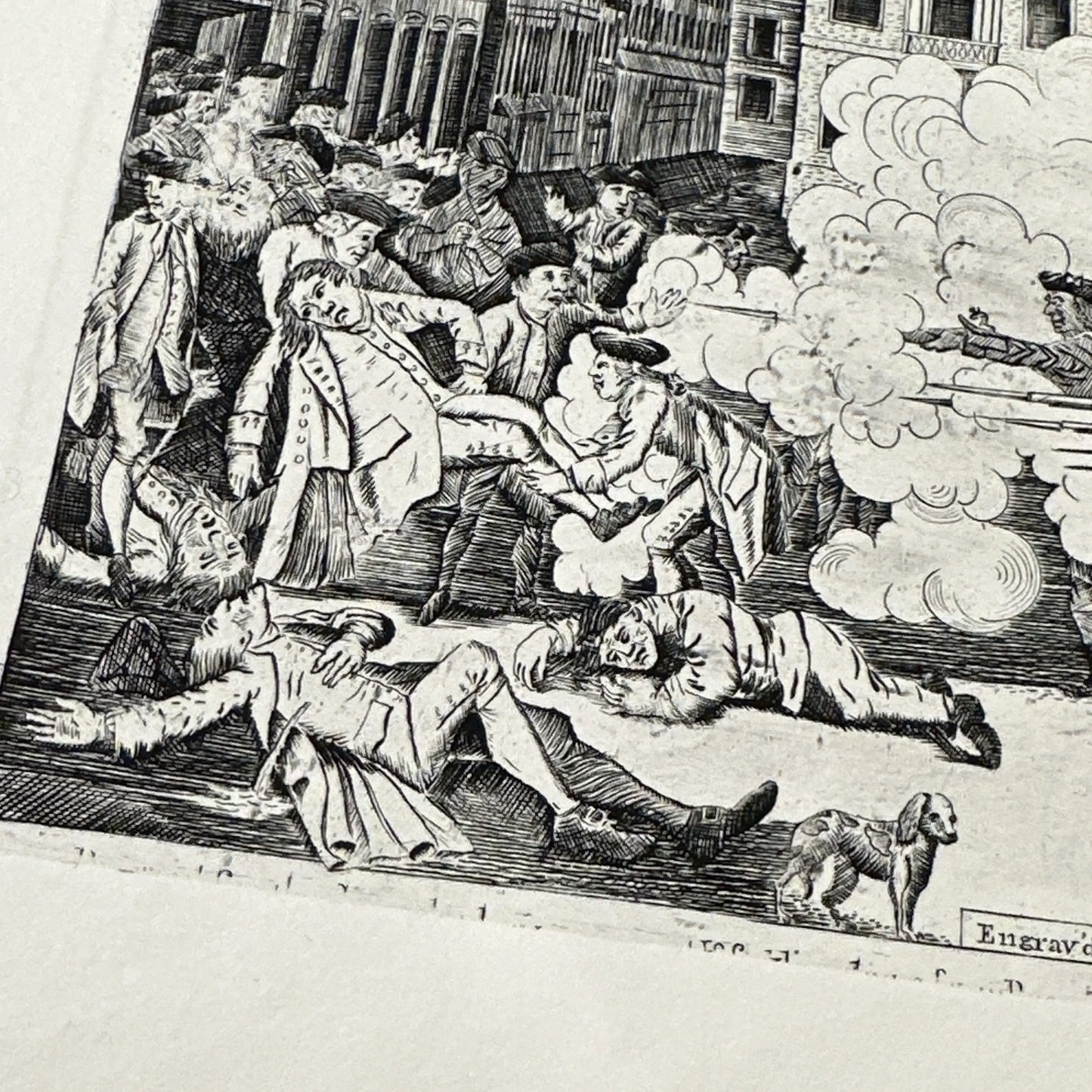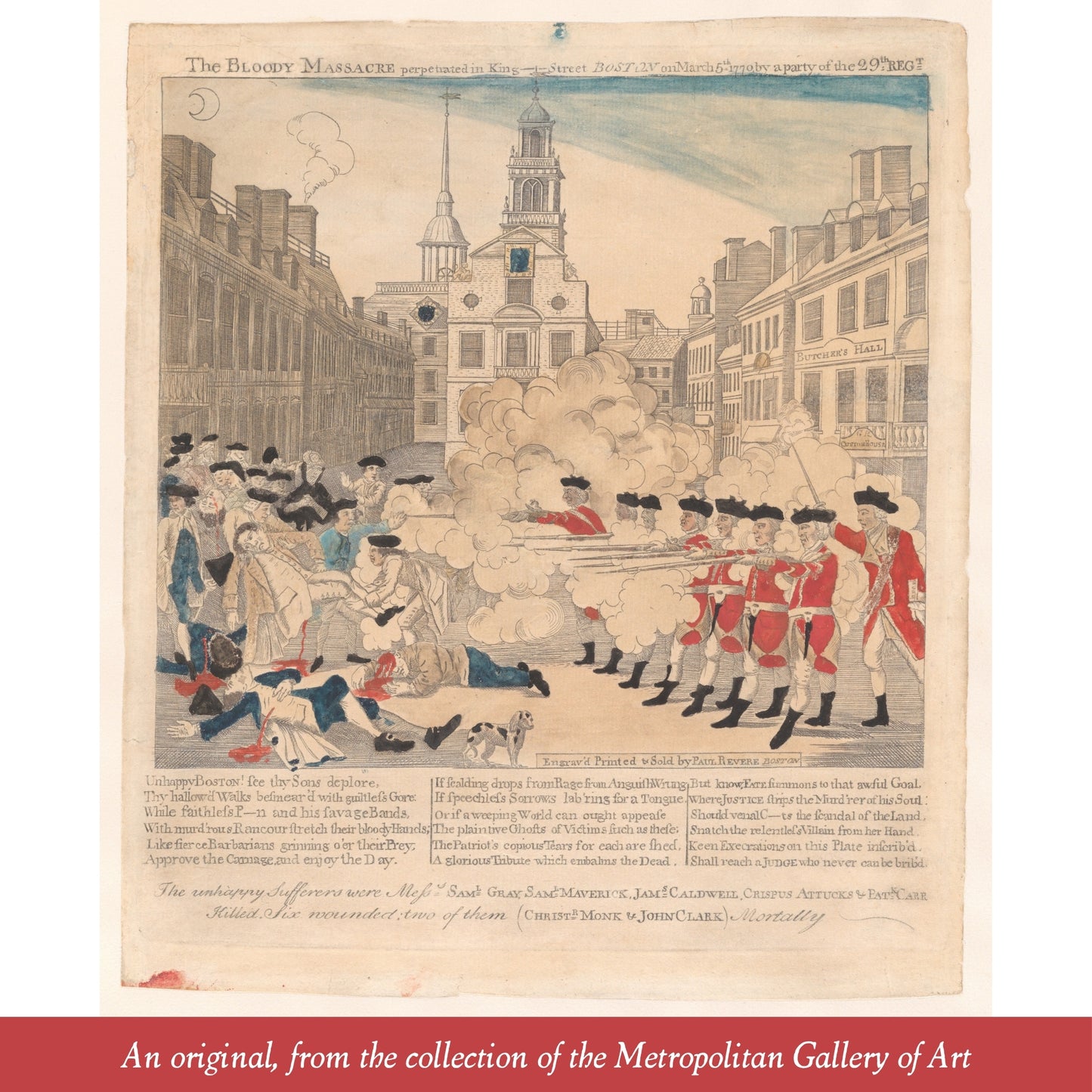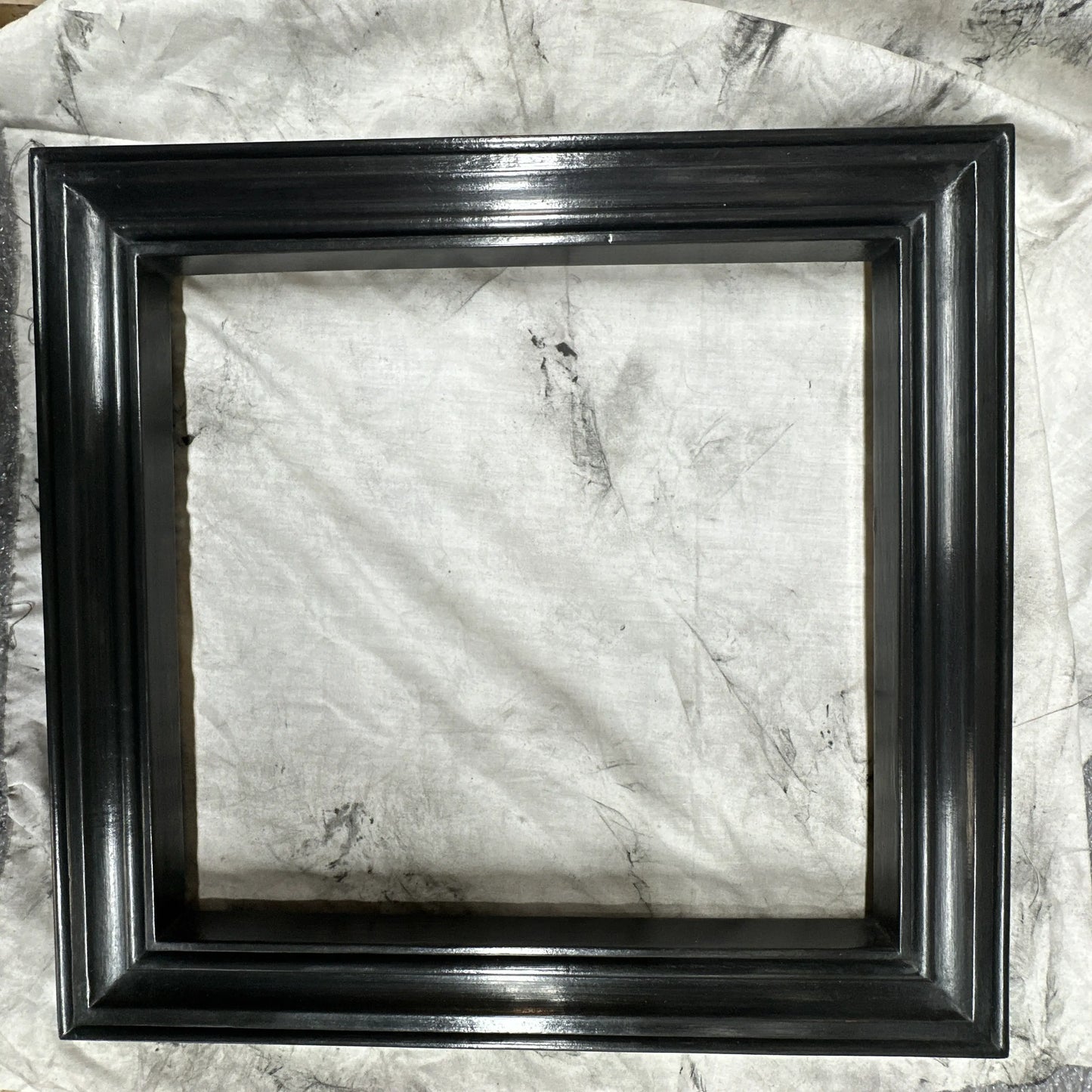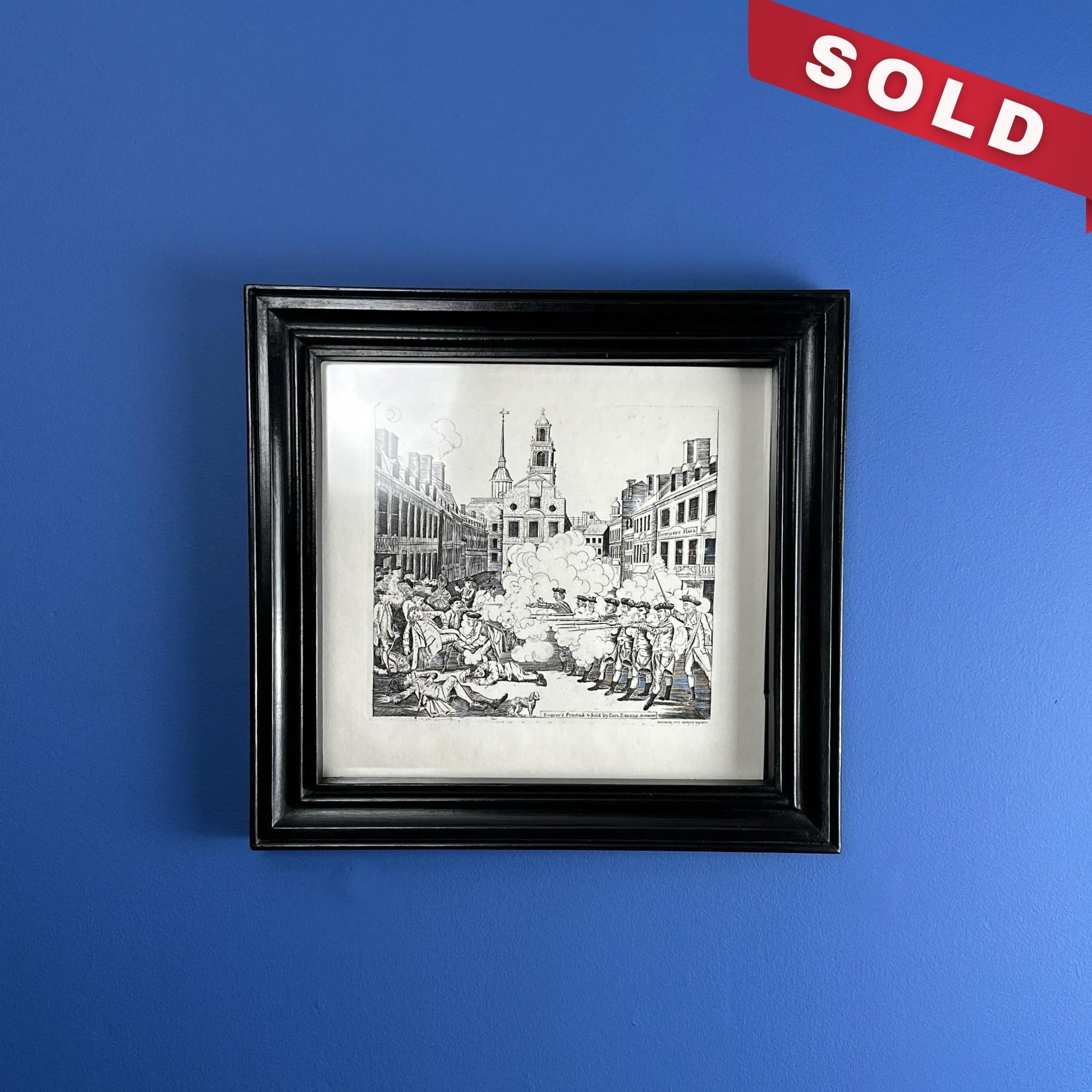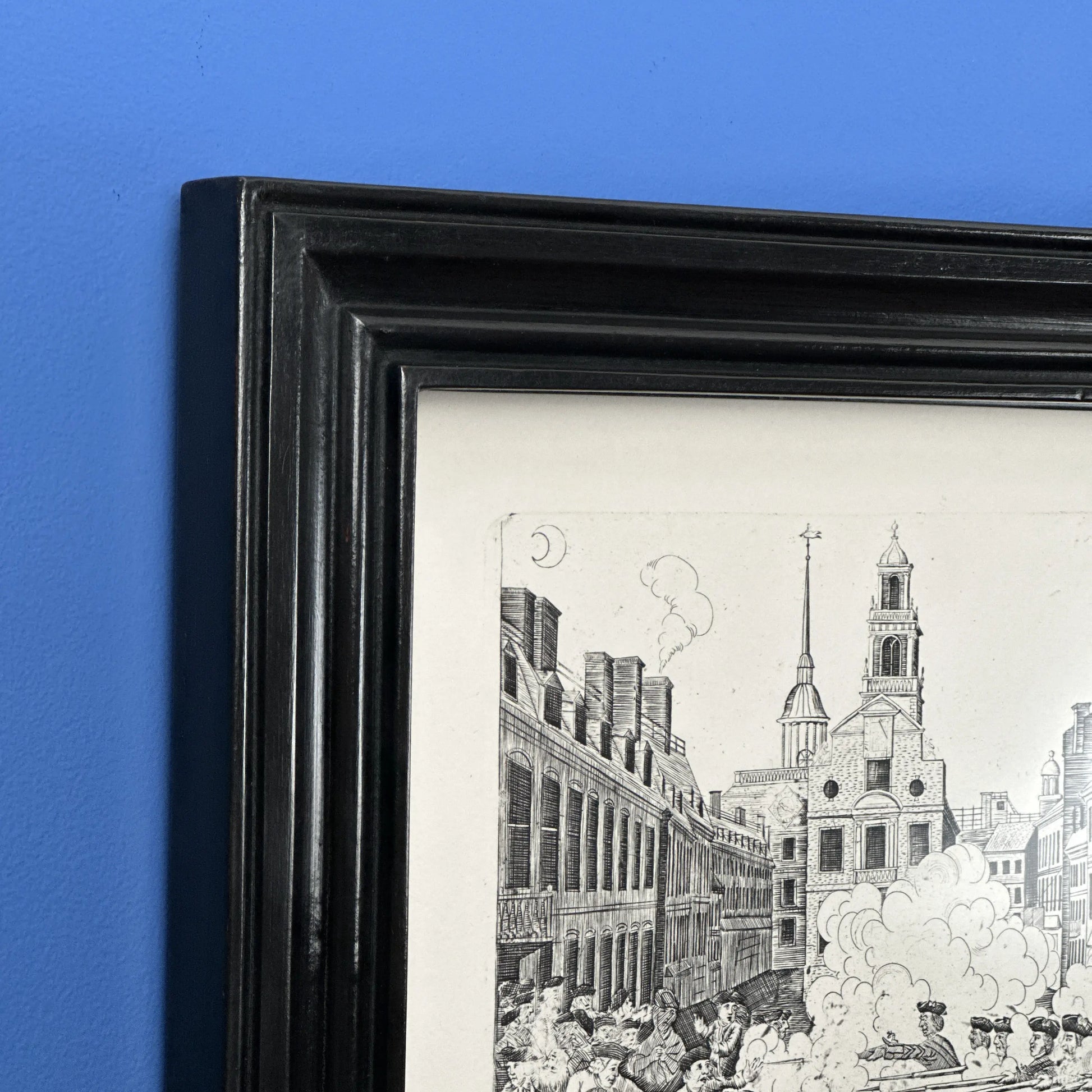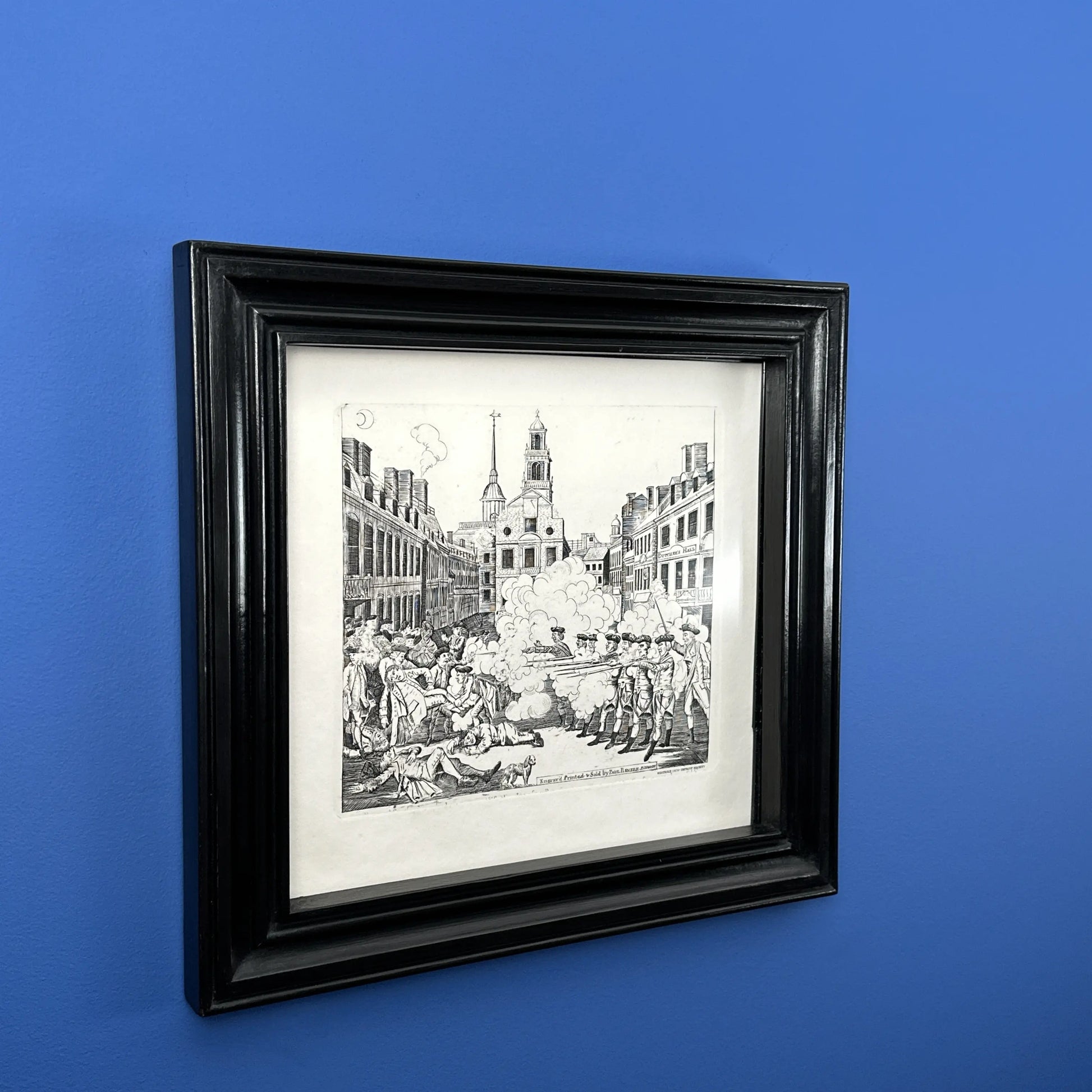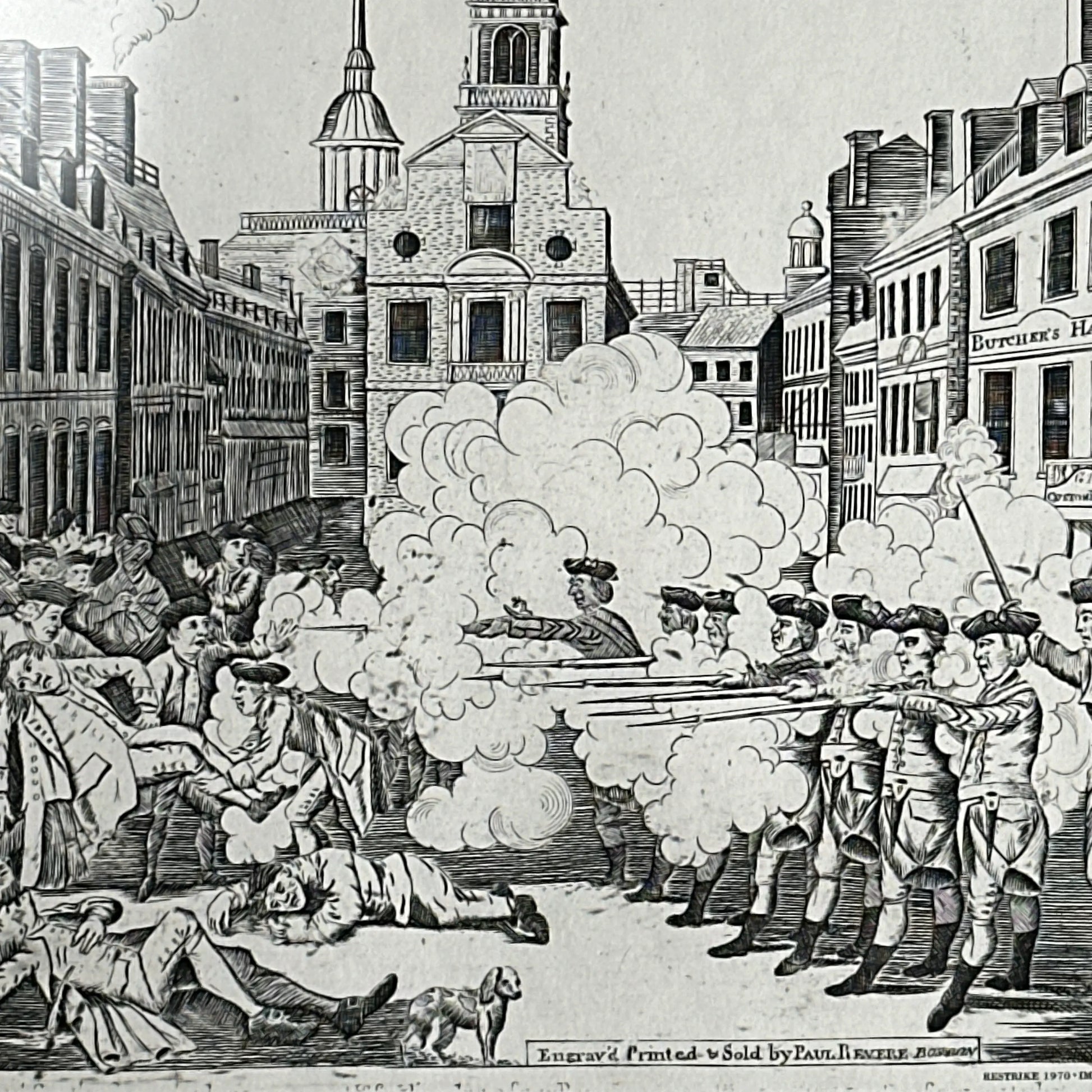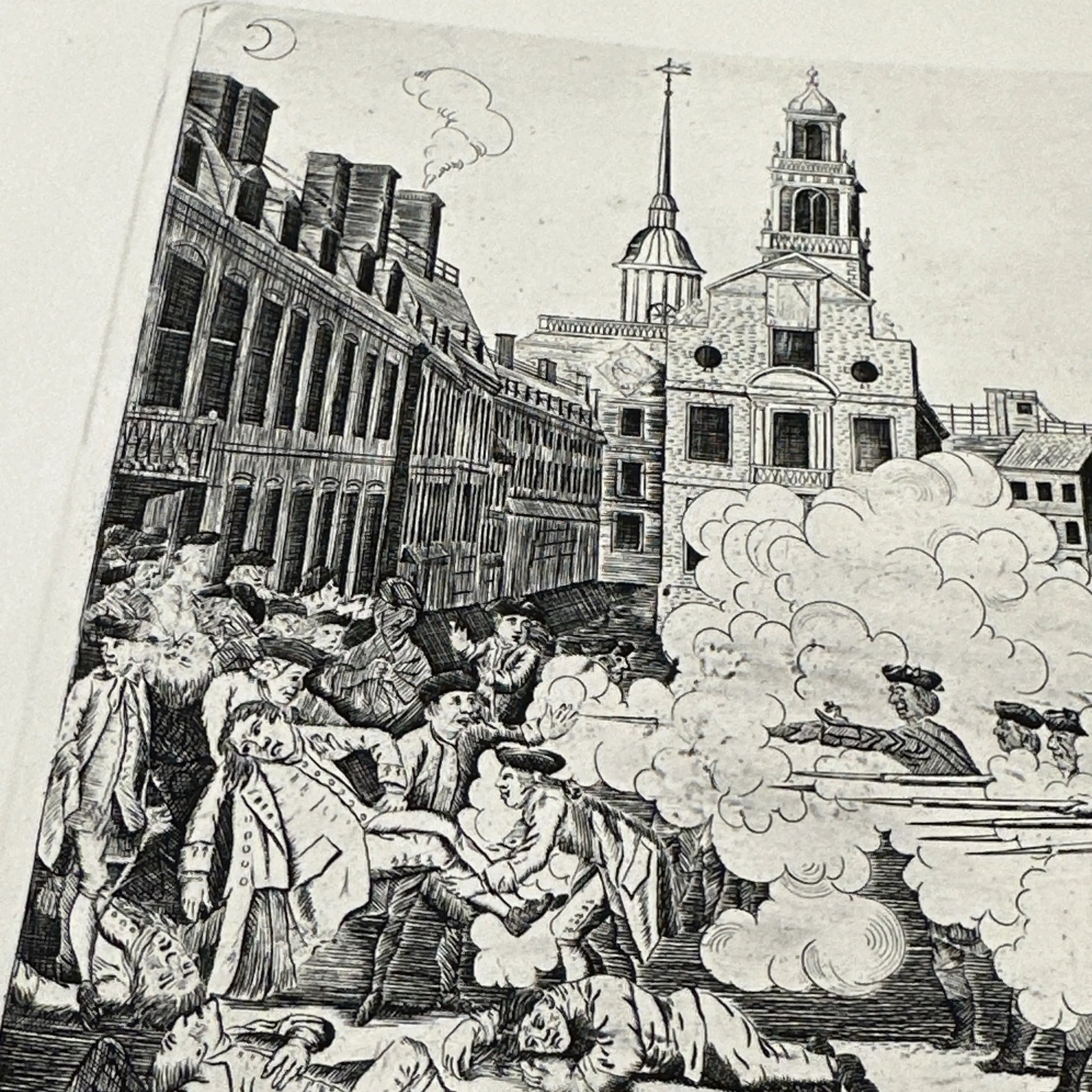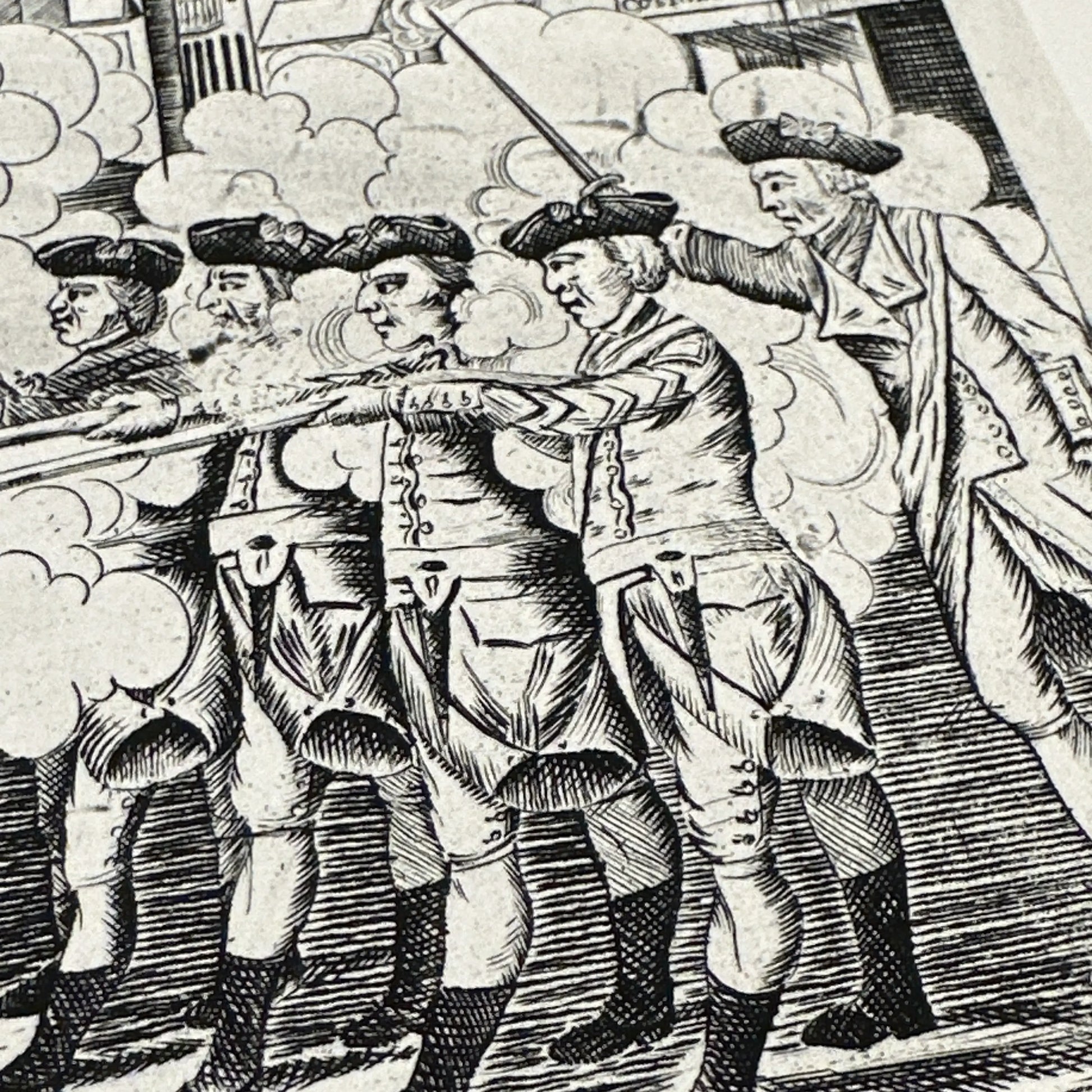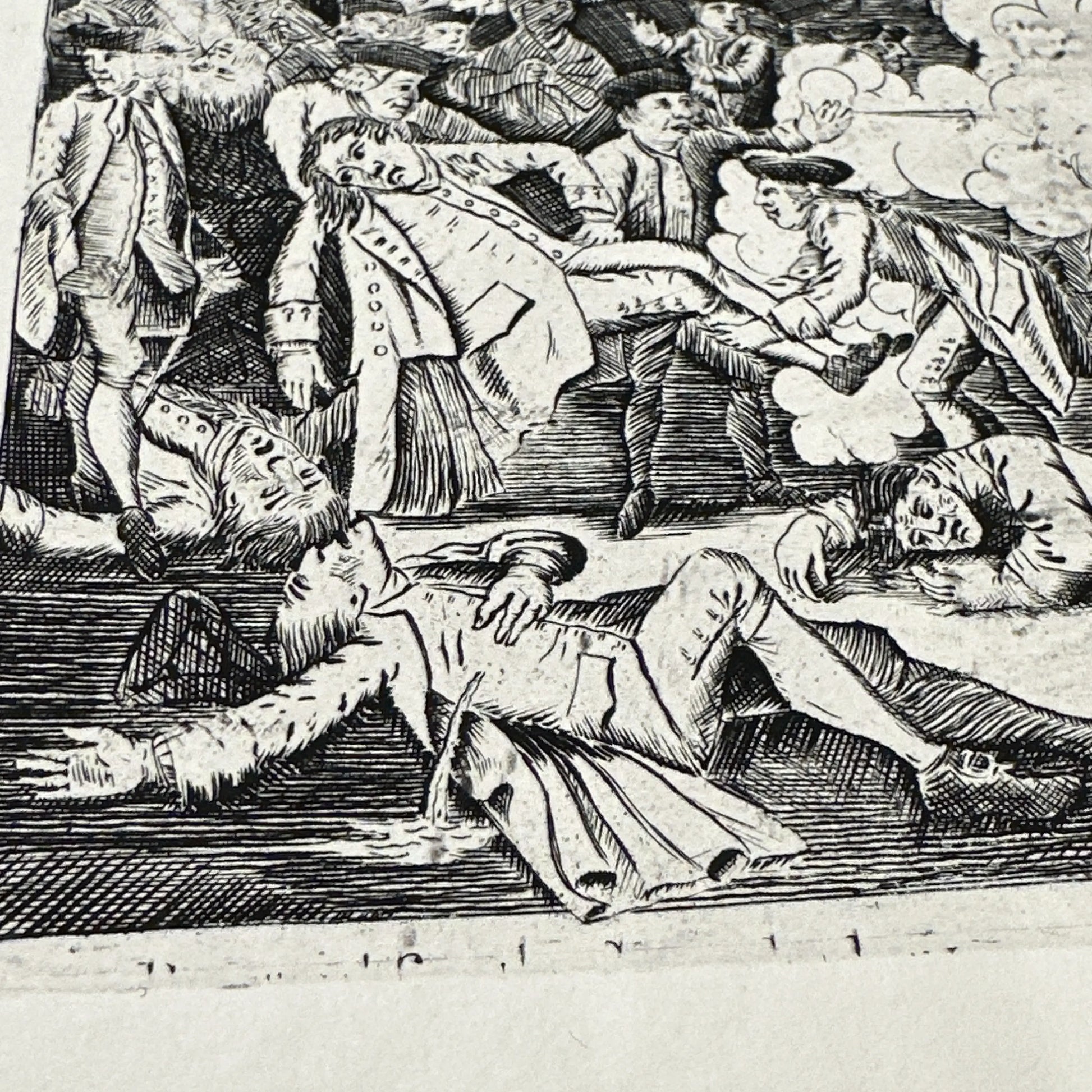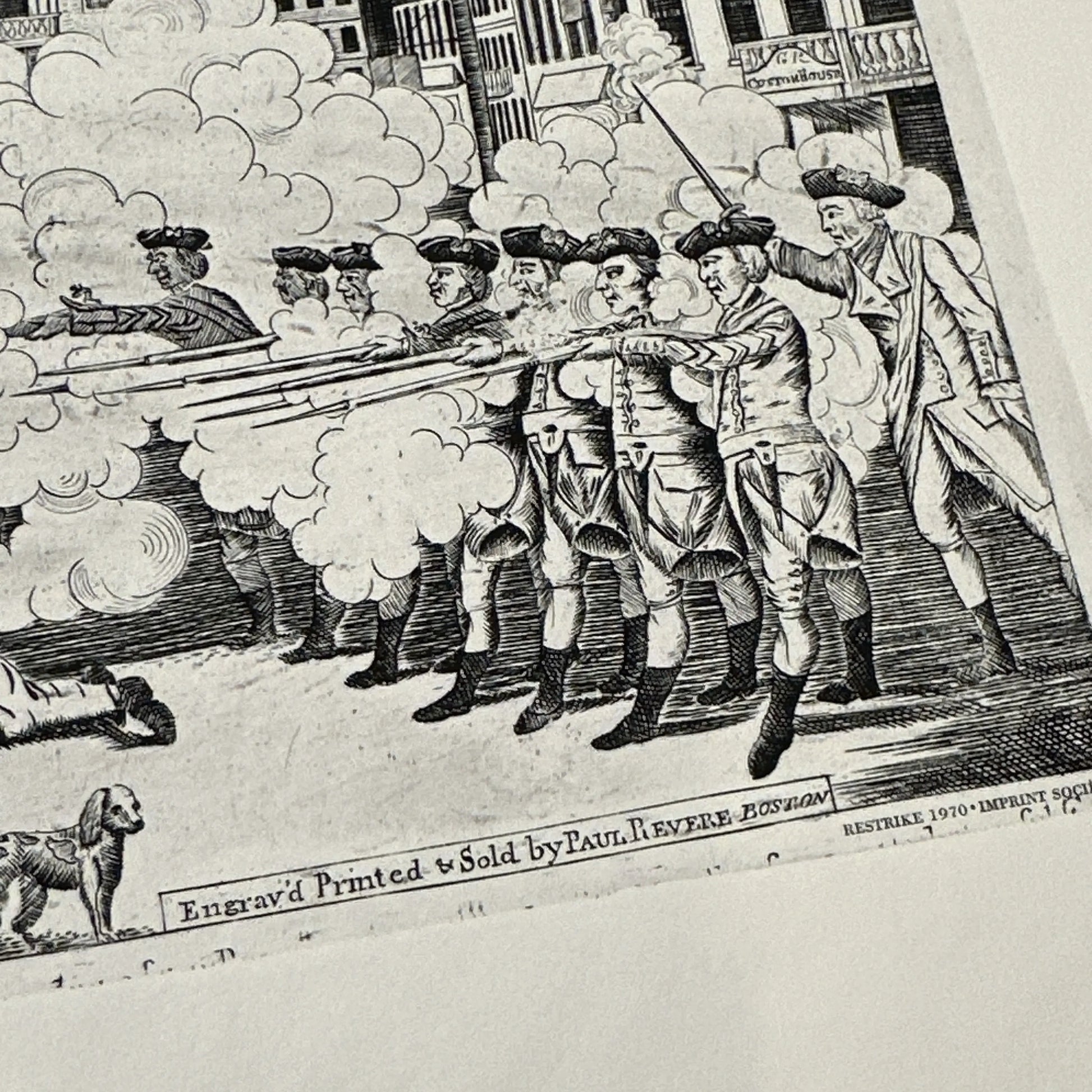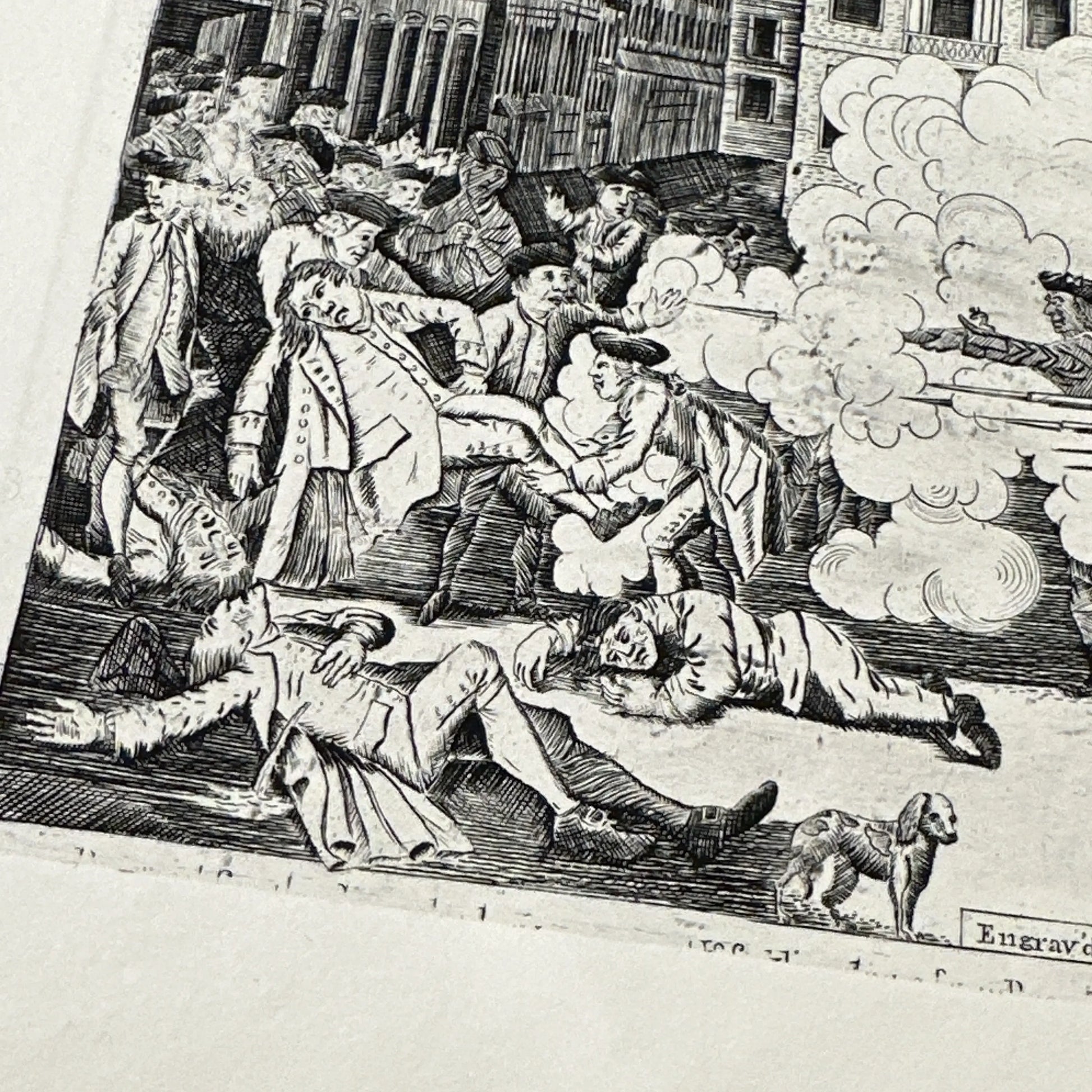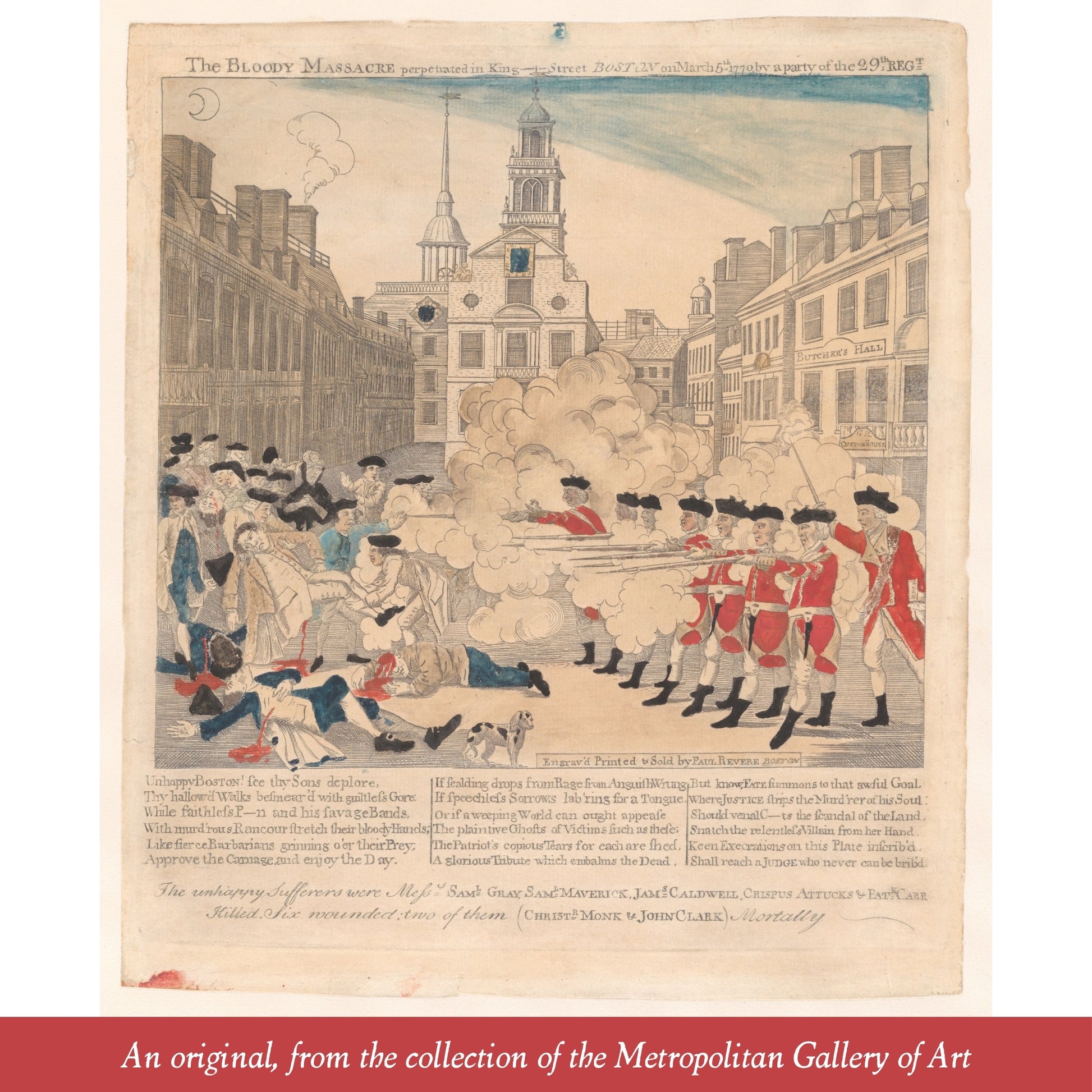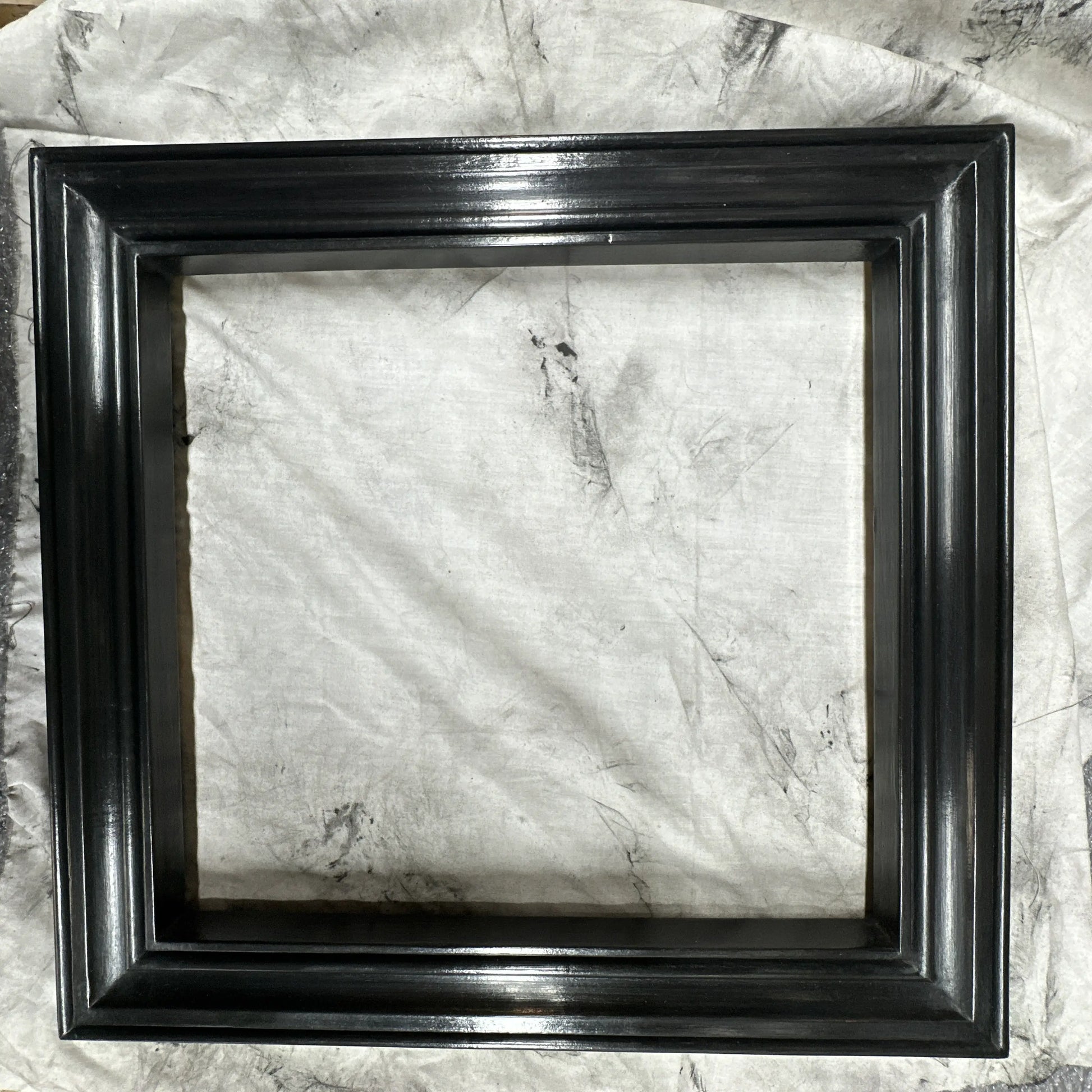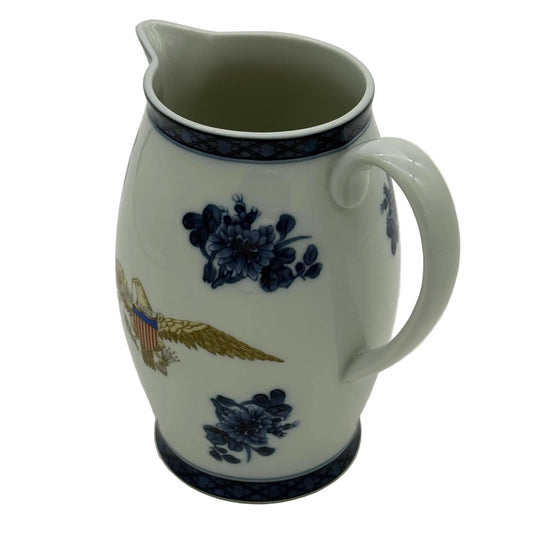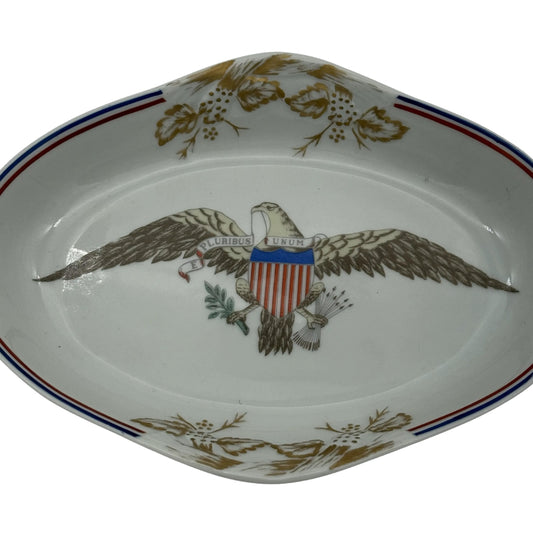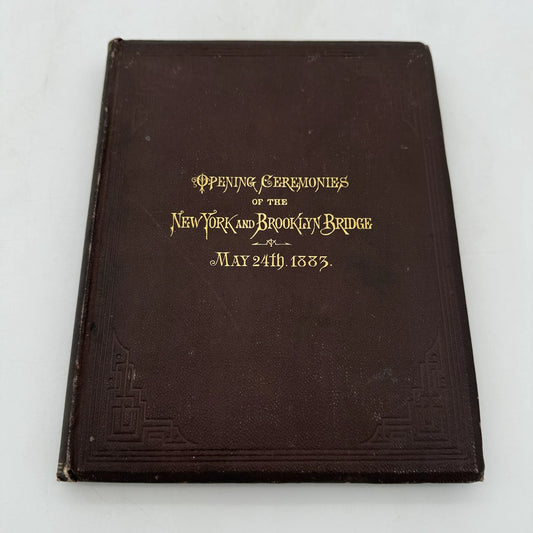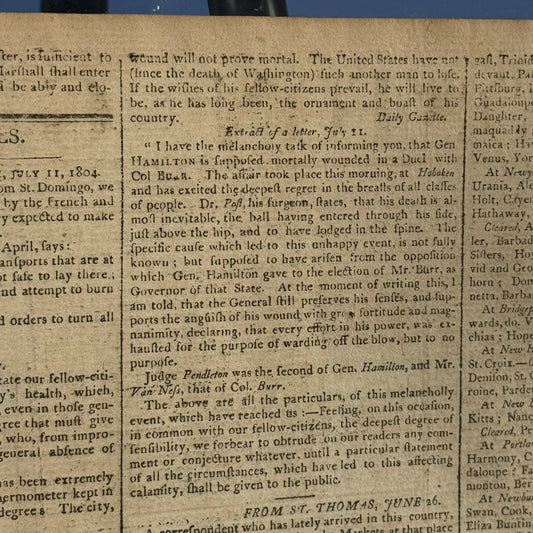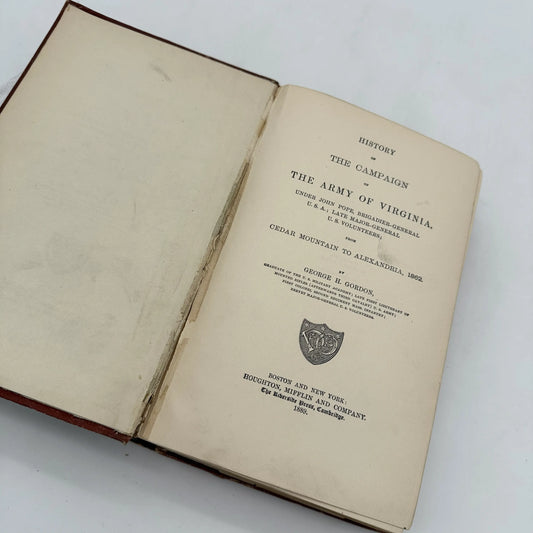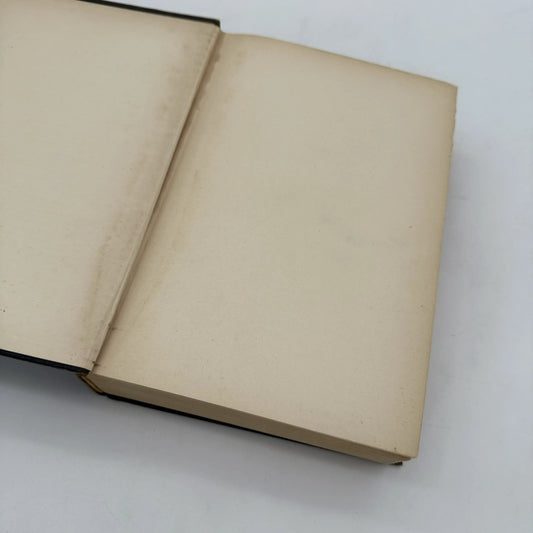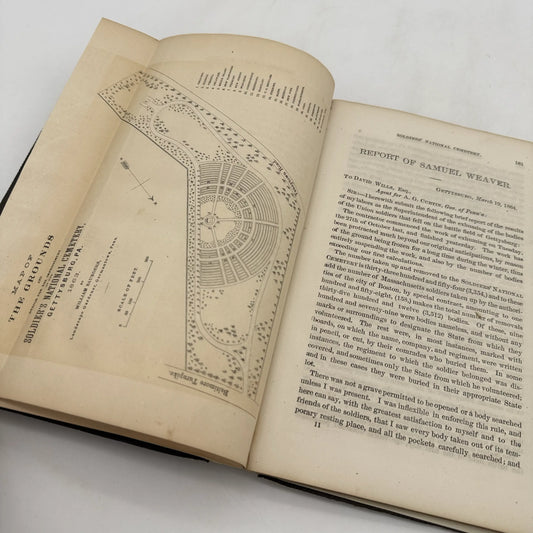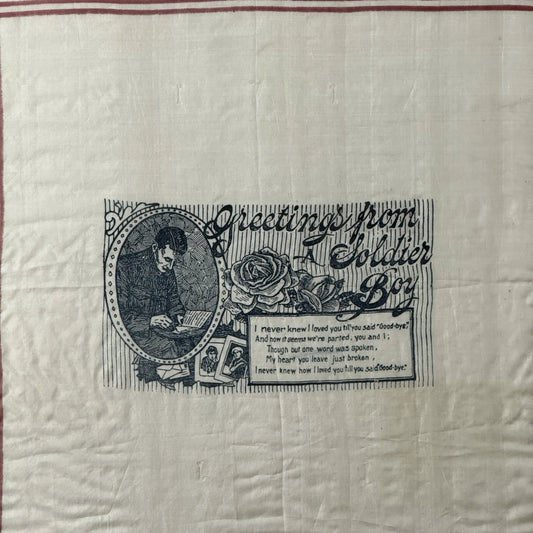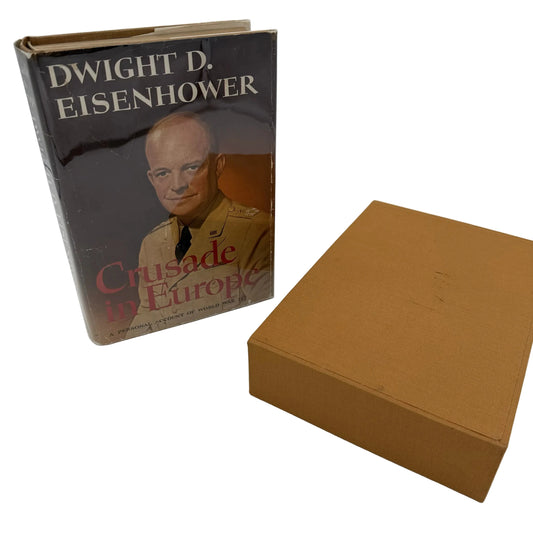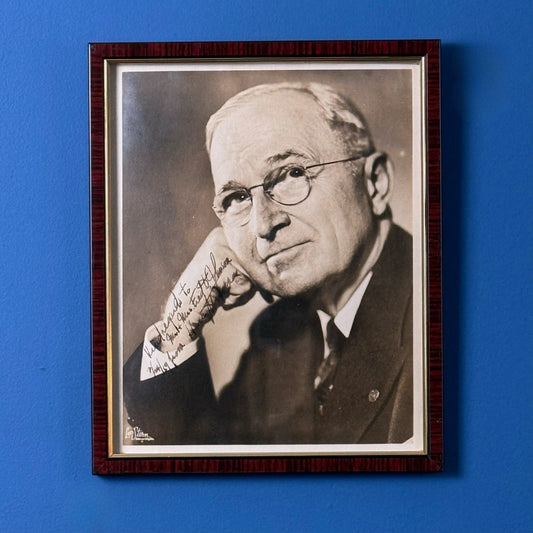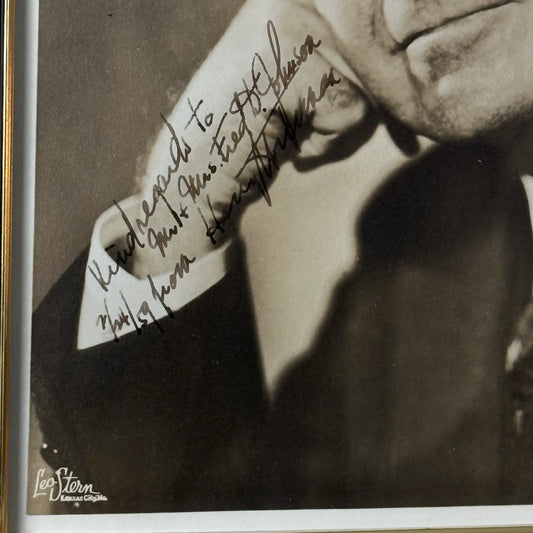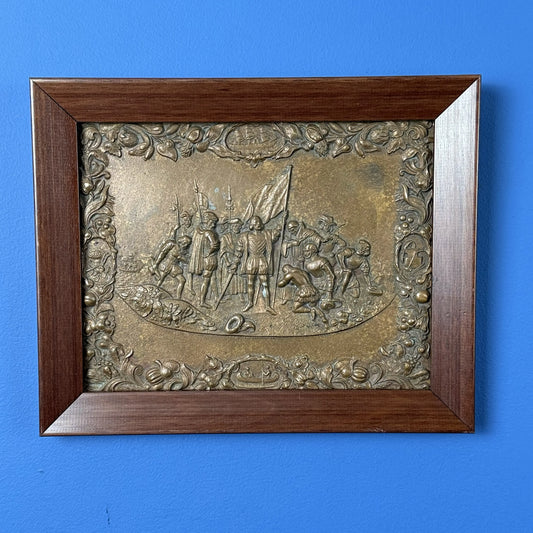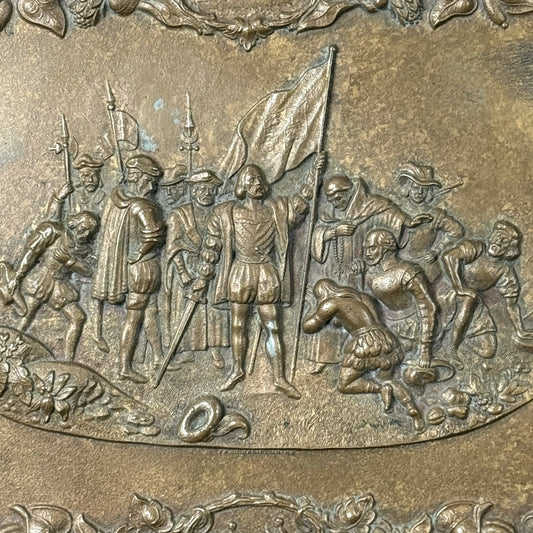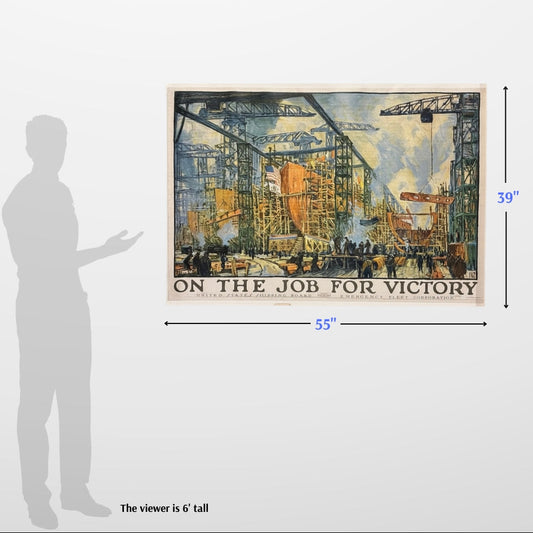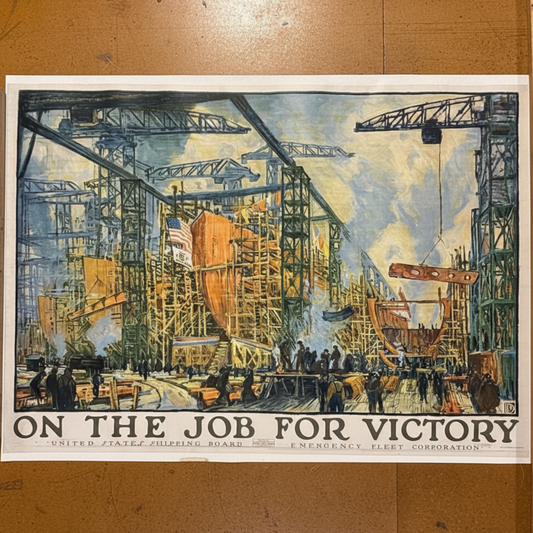Boston Massacre print made from Revere's original plate — Framed
Boston Massacre print made from Revere's original plate — Framed
Updated March 14 at 10:45 pm: Both have been sold.
Made from the original plate that Revere used to create his famous Boston Massacre image, "The bloody massacre perpetrated on King Street, Boston on March 5th 1770 by a party of the 29th Regt." (We've included a photo of one of the originals from the Metropolitan Gallery.
We've included detailed historical information below, including an explanation of several of the elements in the print.
The original plate Revere used is in the Massachusetts State Archives and it was lent in 1970 to make these prints. There were a limited number made, and the likelihood that anyone in the future will be able to borrow the plate and print more seems very remote.
These prints are black and white, though a limited number were hand colored.
We also offer a beautiful, hand-engraved print of Revere famous image that is made by a contemporary engraver. It is available as a black and white print and as a hand-colored print.
About the print
The sheet size is approximately 11" x 14" and the image is about 10" square.
They are in a hand made wooden that is dark black with hints of the red undercoat showing through in a few place for added depth. We have used museum-grade non-glare, UV-protecting acrylic for the glazing.
Frame size: 13.5" x 14.5"
Only two available.
Shipping: $25. These will be shipped via UPS with signature required. Please allow one week for shipping.
Historical background
"By the beginning of 1770, there were 4,000 British soldiers in Boston, a city with 15,000 inhabitants, and tensions were running high. On the evening of March 5, crowds of day laborers, apprentices, and merchant sailors began to pelt British soldiers with snowballs and rocks. A shot rang out, and then several soldiers fired their weapons. When it was over, five civilians lay dead or dying, including Crispus Attucks, an African American merchant sailor who had escaped from slavery more than twenty years earlier.
"Produced just three weeks after the Boston Massacre, Paul Revere’s historic engraving 'The Bloody Massacre in King-Street' was probably the most effective piece of war propaganda in American history. Not an accurate depiction of the actual event, it shows an orderly line of British soldiers firing into an American crowd and includes a poem that Revere likely wrote. Revere based his engraving on that of artist Henry Pelham, who created the first illustration of the episode—and who was neither paid nor credited for his work.
"Here are a few of the elements Paul Revere used in his engraving to shape public opinion:
- The British are lined up and an officer is giving an order to fire, implying that the British soldiers are the aggressors.
- The colonists are shown reacting to the British when in fact they had attacked the soldiers.
- British faces are sharp and angular in contrast to the Americans’ softer, more innocent features. This makes the British look more menacing.
- The British soldiers look like they are enjoying the violence, particularly the soldier at the far end.
- The colonists, who were mostly laborers, are dressed as gentlemen. Elevating their status could affect the way people perceived them.
- The only two signs in the image that you can read are "Butcher’s Hall" and "Customs House," both hanging directly over the British soldiers.
- There is a distressed woman in the rear of the crowd. This played on eighteenth-century notions of chivalry.
- There appears to be a sniper in the window beneath the "Butcher’s Hall" sign.
- Dogs tend to symbolize loyalty and fidelity. The dog in the print is not bothered by the mayhem behind him and is staring out at the viewer.
- The sky is illustrated in such a way that it seems to cast light on the British "atrocity."
- Crispus Attucks is visible in the lower left-hand corner. In many other existing copies of this print, he is not portrayed as African American.
- The weather conditions depicted do not match the testimony presented at the soldier’s trial (no snow).
- The soldiers’ stance indicates an aggressive, military posture.
- In the first edition, the time on the clock was incorrect. Revere had it corrected immediately.
- The trial of the British soldiers was the first time a judge used the phrase "reasonable doubt."
- One of the British soldiers named Pierce Butler left the army and became a South Carolina plantation owner. In 1787, he was appointed as a delegate to the Constitutional Convention."
Source: The Gilder Lehrman Institute of American History
Made by America
Made by America
Almost all of the new products we offer are designed by us and made in America and most of our Rare Finds were made in America.
Our original designs are based on our nation’s history and our love of American history. Read more about other things we've created, including The History List, History Camp, and The Pursuit of History, in addition to The History List Store.
Every product that is made in America states that in the product description and includes the "Made in U.S.A." graphic.
